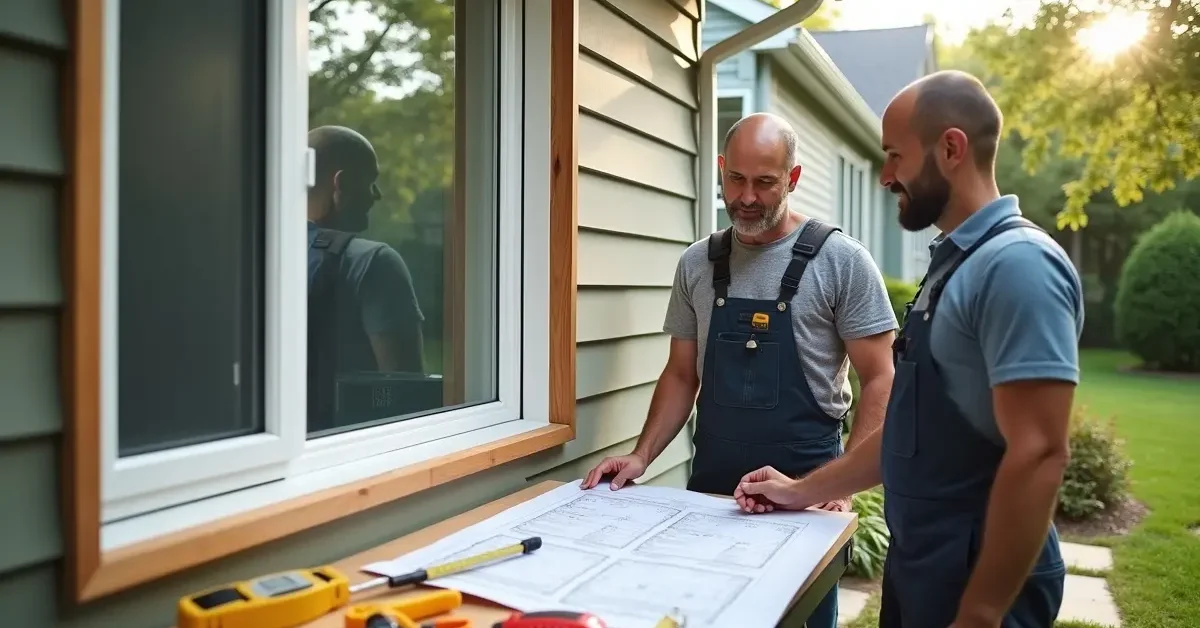Windows are essential components of any home, providing natural light, ventilation, and aesthetic appeal. Over time, however, they may become less efficient or outdated. This guide will explore the world of window replacement, offering valuable insights to help you make informed decisions about upgrading your home’s windows.
Contents
Why Consider Window Replacement?
There are numerous reasons to consider replacing your windows:
- Energy Efficiency: Modern windows offer superior insulation, potentially reducing your heating and cooling costs.
- Improved Comfort: New windows can eliminate drafts and cold spots, creating a more comfortable living environment.
- Enhanced Curb Appeal: Updated windows can significantly improve your home’s exterior appearance.
- Increased Home Value: Quality window replacements often yield a high return on investment when selling your home.
- Reduced Maintenance: Many new window designs feature low-maintenance materials and easy-cleaning features.
- Better Sound Insulation: Newer windows can help reduce outside noise, creating a quieter indoor environment.
- UV Protection: Some modern windows come with coatings that protect your furniture and flooring from sun damage.
Popular Window Styles
When replacing your windows, you’ll encounter various styles to choose from:
- Double-Hung: These traditional windows have two sashes that move up and down, allowing for versatile ventilation options.
- Casement: Hinged on one side, these windows open outward like a door, providing excellent airflow.
- Sliding: These windows slide horizontally, making them ideal for areas with limited exterior space.
- Bay and Bow: These projecting window assemblies add architectural interest and create additional interior space.
- Picture: Fixed windows that don’t open, designed to provide unobstructed views and maximum natural light.
- Awning: Hinged at the top, these windows open outward from the bottom, allowing for ventilation even during light rain.
Window Materials: Pros and Cons
The material you choose for your replacement windows can significantly impact their performance, appearance, and longevity:
Vinyl
– Pros: Affordable, low-maintenance, energy-efficient
– Cons: Limited color options, may not be suitable for historic homes
Wood
– Pros: Classic appearance, excellent insulation, can be painted or stained
– Cons: Requires regular maintenance, can be expensive
Fiberglass
– Pros: Extremely durable, low-maintenance, good insulation properties
– Cons: Higher cost, limited color options
Aluminum
– Pros: Lightweight, strong, modern appearance
– Cons: Poor insulator, prone to condensation
Understanding Window Energy Efficiency
When shopping for replacement windows, pay attention to these energy efficiency indicators:
- U-Factor: Measures heat transfer; lower numbers indicate better insulation
- Solar Heat Gain Coefficient (SHGC): Indicates how much solar radiation passes through the window; lower numbers mean less heat gain
- Air Leakage: Measures how much air passes through the window assembly; lower numbers are better
Look for windows with ENERGY STAR certification, as these meet strict energy efficiency guidelines set by the U.S. Environmental Protection Agency and the Department of Energy.
The Window Replacement Process
A typical window replacement project involves several steps:
- Initial Consultation: A professional assesses your current windows and discusses your needs and preferences.
- Measurements: Precise measurements are taken to ensure a perfect fit for your new windows.
- Selection: You choose your preferred window styles, materials, and features.
- Ordering: The contractor orders the custom windows from the manufacturer.
- Removal: Old windows are carefully removed to minimize damage to surrounding structures.
- Installation: New windows are installed, ensuring proper alignment and sealing.
- Insulation: Any gaps around the new windows are insulated to maximize energy efficiency.
- Finishing: Trim work is completed, and the area is cleaned up.
Choosing a Window Replacement Contractor
Selecting the right contractor is crucial for a successful window replacement project. Consider these tips:
- Get multiple quotes from reputable contractors
- Check for proper licensing and insurance
- Read customer reviews and ask for references
- Inquire about warranties on both the windows and the installation work
- Discuss the project timeline and any potential disruptions to your daily life
DIY vs. Professional Installation
While some homeowners may consider DIY window replacement to save money, it’s generally recommended to hire a professional. Window installation requires specialized skills and tools to ensure proper fit, sealing, and energy efficiency. Improper installation can lead to air leaks, water damage, and reduced window performance. Engaging a reputable window replacement company can ensure precise installation and long-lasting results, minimizing potential issues.
Maintenance Tips for New Windows
To maximize the lifespan and performance of your new windows:
- Clean the glass regularly with a mild, non-abrasive cleaner
- Lubricate moving parts annually
- Inspect weatherstripping and seals periodically, replacing as needed
- Avoid painting or sealing movable parts
- Clear weep holes to ensure proper drainage
By following this comprehensive guide, you’ll be well-equipped to make informed decisions about your window replacement project. Remember that investing in high-quality windows and professional installation can lead to long-term energy savings, increased home comfort, and improved property value. Take your time to research and consult with professionals to ensure the best outcome for your home improvement project.

